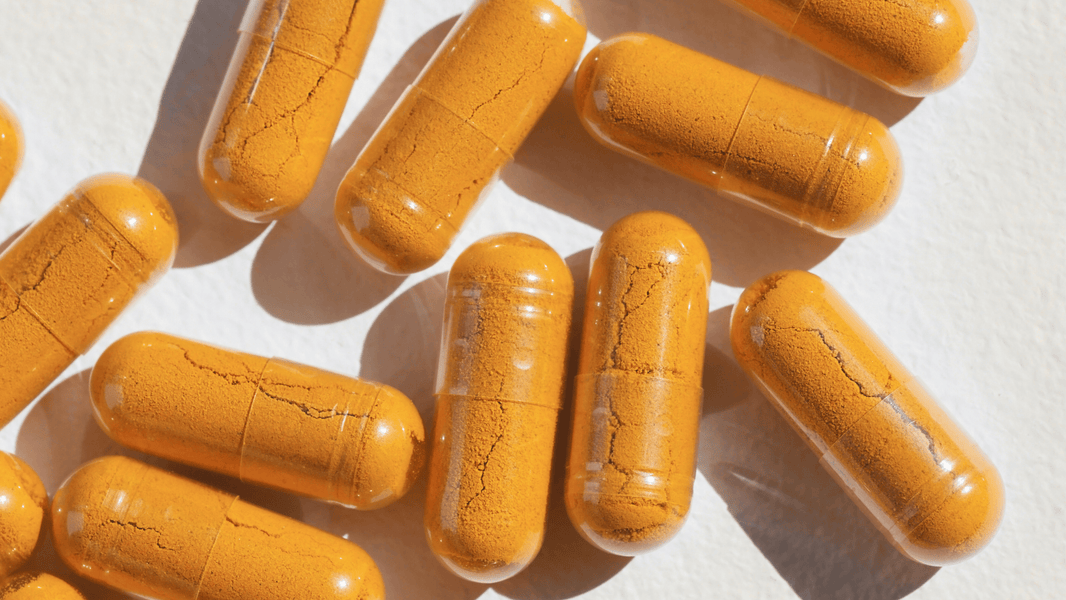Practical guide: Vitamin D
What is vitamin D?
Vitamin D is a so-called fat-soluble molecule, meaning it dissolves in the body's fats. Unlike most vitamins, it cannot be manufactured by our bodies. It is an essential nutrient that must be obtained from the outside, through diet, sun exposure, or dietary supplements.
The two main forms of vitamin D
Vitamin D exists in two main forms:
- Vitamin D2 (ergocalciferol): of plant origin, it is found in certain mushrooms, yeasts and cereals.
- Vitamin D3 (cholecalciferol): of animal origin, this is the form that our skin produces when it receives the precious ultraviolet rays of the sun, UVB .
Why consider it a hormone?
Although classified as a vitamin, vitamin D acts as a hormone to regulate more than 200 genes involved in mineral metabolism (calcium, phosphate) and beyond.
How does the body make and activate vitamin D?
Step 1: Production under the action of the sun
In the epidermis, 7-dehydrocholesterol captures UVB (290–315 nm) to become pre-vitamin D3 . Then, under the effect of heat, pre-vitamin D3 is transformed into cholecalciferol (Vitamin D₃)
📍 Remember: Without UVB, there's no vitamin D3! That's why it's important to protect yourself from the sun with a sunscreen that only blocks UVA rays!
Step 2: Storage in the liver
Once formed, vitamin D3 reaches the liver through the bloodstream. Here, it undergoes further transformations under the action of enzymes , which allow it to have a form suitable for storage ( 25-hydroxyvitamin D₃ ). This allows the body to have a capital supply of vitamin D, regardless of the level of sun exposure. This new form has a half-life of 2 to 3 weeks.
Step 3: Activation by the kidney
In the liver, 25-hydroxyvitamin D₃ will bind to a protein (vitamin D binding protein (DBP) which will transport it to the kidney . There, it is captured by the kidney cells for final transformation, which gives 1,25-dihydroxyvitamin D₃ .
📍 This form is the active form of vitamin D3 , it is the only one that is the reason for the multiple benefits associated with vitamin D.
Roles and benefits of vitamin D
Vitamin D is primarily known for its role in the body's absorption and utilization of calcium and phosphorus . In fact, one of vitamin D's key roles is to help maintain normal bones through various mechanisms.
A key vitamin for bone health
At the intestinal level
Vitamin D3 enhances the absorption of calcium and phosphorus from food.
At the bone level
When blood calcium levels drop, vitamin D helps draw on bone calcium reserves to restore balance . This regulatory mechanism is essential for maintaining a stable blood calcium concentration.
At the renal level
Vitamin D helps limit calcium loss in the urine , which also helps maintain stable calcium levels in the blood.
Other benefits and new avenues of study
Beyond the well-established role that vitamin D plays in bone health, EFSA recognizes all of the following benefits:
- Contributes to maintaining normal blood calcium levels (seen previously)
- Contributes to the maintenance of normal bones (seen previously)
- Contributes to the maintenance of normal teeth
- Contributes to the maintenance of normal muscle function
- Contributes to the normal functioning of the immune system
- Plays a role in the process of cell division (the way cells multiply, to form new cells).
Several studies have also shown that vitamin D supplementation can significantly reduce the risk of non-vertebral fractures , as well as the risk of falls in people over 70 years old.
At the same time, several studies have revealed that vitamin D, thanks to its many properties, could be used for therapeutic purposes . Molecules derived from vitamin D are already used in certain treatments, such as psoriasis . The role that vitamin D could play in resistance to certain cancers and chemotherapy is being actively studied.
Effects of vitamin D deficiency
Despite intake through diet and sunlight, vitamin D deficiencies are very common. A 2012 study by Public Health France showed that 80.1% of French adults were deficient . Of these, 42.5% had a moderate to severe vitamin D deficiency, and 4.8% had a severe deficiency.
But what can be the consequences of a lack of vitamin D ?
The main risks are mainly linked to bone demineralization .
- In children, a lack of vitamin D can result in rickets , a condition characterized by soft bones , deformities , or even delayed growth .
- In adults, we speak more of osteomalacia , responsible for bone pain , a high risk of osteoporosis and fractures , as well as muscle weakness .
More rarely, a severe vitamin D deficiency can lead to muscle disorders , such as tetany attacks or convulsions .
Populations at risk
The body's ability to properly manufacture and use vitamin D depends on several factors, which put certain populations at greater risk of developing deficiencies .
The elderly
Skin aging leads to a significant decrease in vitamin D synthesis, following sun exposure. Since the body is unable to produce enough of the vitamin, it no longer has sufficient reserves to cover its necessary needs. Often, vitamin D deficiency in older people results in a high risk of osteoporosis .
People with little sun exposure
Similarly, people who spend less than 20 minutes a day in the sun, and who do not sunbathe in the summer, may not receive enough UVB rays for the skin to synthesize vitamin D. For the same reason, people who use a total sunscreen (UVA + UVB) are also at greater risk.
People with dark skin
Melanin , which is responsible for skin color, can prevent skin receptors from effectively absorbing UVB rays from the sun. As a result, the body may not have enough "raw material" for vitamin D synthesis.
Pregnant and menopausal women
Pregnancy and menopause are stages in a woman's life that result in significant hormonal upheaval . This upheaval often leads to bone demineralization, which increases the risks mentioned above.
Newborns and infants
Because very young children have little sun exposure and breast milk contains very little vitamin D, they may be at risk of deficiency.
Pathologies
Generally speaking, when the skin is sufficiently exposed to the sun and is able to correctly absorb UVB rays, the body has enough vitamin D. However, certain pathologies can still increase the risk of deficiencies . This is the case:
- People with malabsorption disorders: being unable to properly absorb fats, they cannot absorb vitamin D, which dissolves and is transported with lipids. Thus, it cannot be properly absorbed in the small intestine . In addition, with age, the intestinal mucosa absorbs vitamin D less well.
- People who are unable to convert vitamin D into its active form (1,25-dihydroxyvitamin D₃). Some kidney and liver disorders, hereditary diseases , and medications prevent this transformation.
Recommended dosages and monitoring
Recommended daily intake per day
In France , vitamin D recommendations vary among official bodies, which can cause confusion among both health professionals and the general public. In addition to national benchmarks, each country also sets its own daily intake . Here is an overview of the recommended daily dosages.
The French National Agency for Food, Environmental and Occupational Health and Safety ( ANSES ) has based its nutritional reference intake (RNP) on that of the World Health Organization ( WHO ). It sets the daily intake of vitamin D at:
- 10 µg (400 IU) for children.
- 15 µg (600 IU) for adults.
- 20 µg (800 IU) for those over 70 years old.
It is important to clarify that this reference of 15 µg/day only takes into account the portion provided by food , without including the vitamin D that the body synthesizes under the effect of solar UVB rays.
For its part, the Academy of Medicine recommends slightly higher doses:
- 20 to 25 µg (800–1,000 IU) for everyone from childhood.
- 25 µg (1000 IU) to 37.5 µg (1500 IU) for 50–70 year olds to compensate for age-related decline in absorption.
-
Up to 37.5 µg (1,500 IU) for seniors over 70 years old.
Blood monitoring
Routine vitamin D screening is not recommended for adults under 74 years of age in the absence of symptoms or specific risk factors. However, an assessment is warranted in:
- People with a diet very low in vitamin D or almost no sun exposure.
- Newborns with tetany (muscle spasms linked to hypocalcemia).
- Children with clinical signs of rickets (bone deformities, growth retardation).
- Older people, especially if they already have low bone density (osteoporosis) or a history of fragility fractures.
In these people, the deficiency can be assessed by blood tests:
- 25-hydroxyvitamin D dosage: this is the reference test for assessing vitamin status.
- Measurement of calcium and phosphate : these two minerals are closely linked to vitamin D , and their dosage allows us to assess their impact.
- Additional markers: bone alkaline phosphatases , parathyroid hormone , etc., help to eliminate other causes of bone fragility and to specify the origin of mineral abnormalities .
Sources of vitamin D
Sun exposure
The most effective way to meet our vitamin D needs remains the sun . For most adults, exposure of 15 to 20 minutes per day (face and forearms without UVB-blocking sunscreen) is effective.
Foods rich in vitamin D
Diet naturally provides a moderate amount of vitamin D, but it is rarely sufficient in the absence of sunlight. To optimize your intake, favor:
- Oily fish (salmon, mackerel, sardines, herring), which remain the most concentrated sources.
- Mushrooms exposed to UV rays , whose D₂ content can rival that of animal products.
- Egg yolks and certain offal (liver), less rich but still contributing.
- Fortified foods (milk, cereals, margarines), practical in autumn and winter.
Even a balanced plate covers on average 3 to 5 µg of vitamin D per day , far from the minimum 15 µg/day recommended for adults.
Dietary supplements: how to choose the right vitamin D?
If you have limited sun exposure or are at risk (dark skin, obesity, age, malabsorption, etc.), vitamin D₃ supplements are a simple and reliable solution. To fully benefit from their benefits, here are some tips:
- Choose the D₃ form (cholecalciferol) : Cholecalciferol is better converted to 25-hydroxyvitamin D in the body than ergocalciferol (D₂), resulting in more stable and higher blood levels.
- Choose an oily dosage form : Vitamin D is fat-soluble: it dissolves in fat. Softgels or oily liquid solutions ensure better absorption than dry tablets.
- Aim for a daily intake over 1 to 3 months : Daily doses of 800–1,000 IU best mimic natural synthesis under the sun. Avoid very high doses at one time, such as quarterly or annual ampoules.*
- Choose opaque and airtight packaging to protect the oily vitamin D3 from oxidation.
- Choose a pure formula , without unnecessary additives and benefiting from quality certifications.
*Why avoid single doses?
After a single very high dose (e.g. 600,000 IU), vitamin D levels peak on day 3 and then fall back to almost baseline within three months. Bone remodeling markers show the same kinetics, returning to normal after 60 days. These significant fluctuations lead to prolonged “trough” periods where vitamin D no longer exerts its effects (calcium absorption, muscle maintenance, immune modulation). However, if you know you will have difficulty taking your course of treatment correctly on a daily basis, we recommend ampoules with a monthly dose . A dosage of 50,000 IU per month, rather than every two or three months, limits variations in levels and remains more effective than a large quarterly or annual bolus.
Precautions to take with vitamin D
Although generally safe, vitamin D supplementation warrants some precautions:
- Do not exceed 4,000 IU/day without medical advice to minimize the risk of hypercalcemia (too much calcium in the blood).
- Monitor 25-(OH)D levels in people at risk (seniors, malabsorptive patients, granulomatous patients, hyperparathyroidism).
- Anticipate drug interactions : corticosteroids, anticonvulsants and thiazide diuretics can modify D₃ metabolism.
- Avoid widely spaced boluses (> 2 months) and massive annual doses, which have been associated with an increased risk of falls and fractures in the elderly.
Sources and references
“The special case of vitamin D”. VIDAL , February 7, 2023, https://www.vidal.fr/actualites/30030-le-cas-particulier-de-la-vitamine-d.html.
Bischoff-Ferrari, Heike A., et al. “A Pooled Analysis of Vitamin D Dose Requirements for Fracture Prevention.” The New England Journal of Medicine , vol. 367, no. 1, July 2012, p. 40-49. PubMed , https://doi.org/10.1056/NEJMoa1109617.



